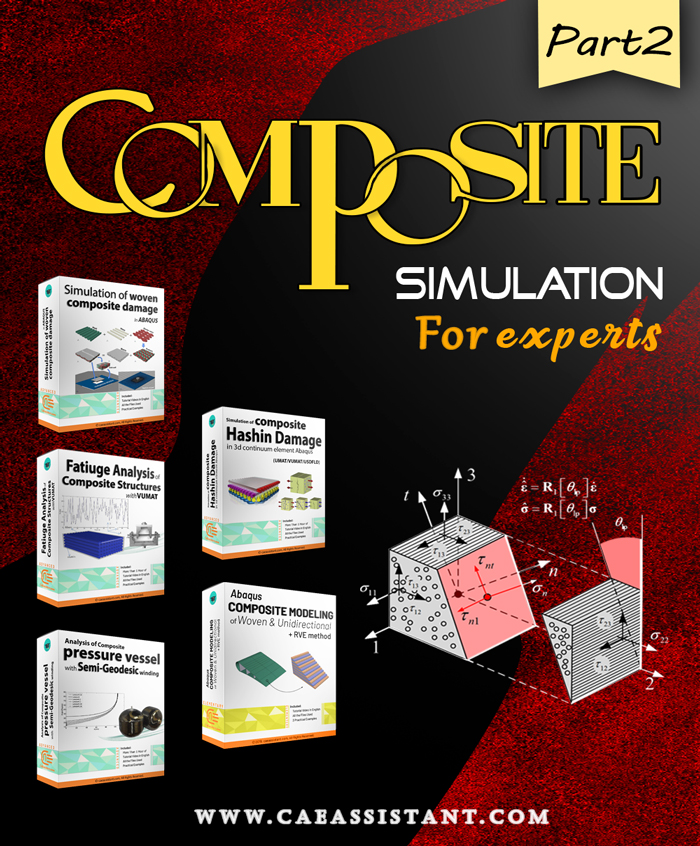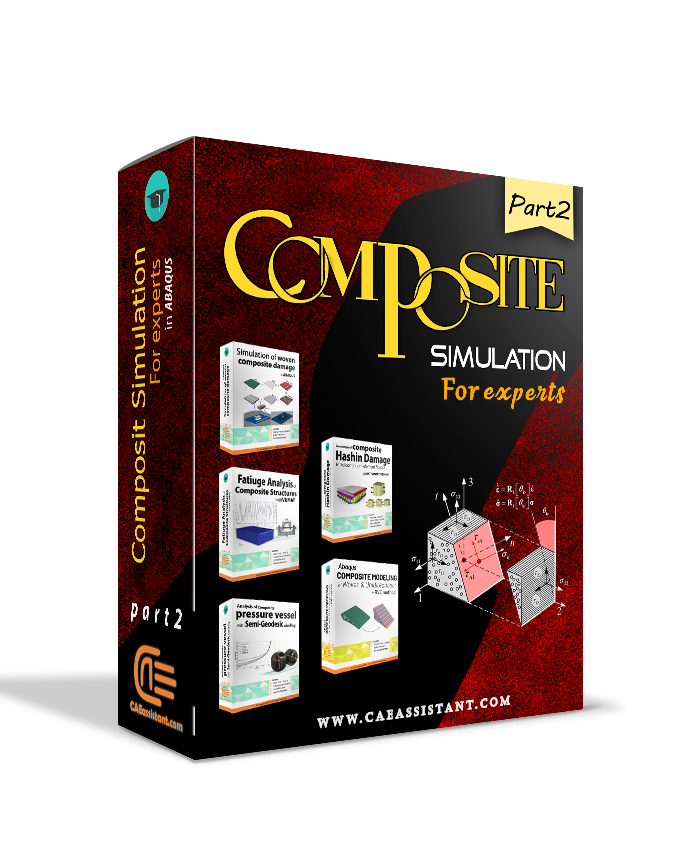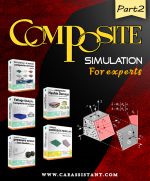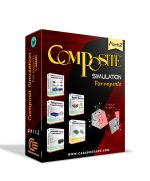If you are a researcher, student, university professor, or Engineer in the company in the field of composite materials, this training package in simulating these materials in Abaqus software is the best selection.
In this training package, everything you need to simulate these materials is completely available from simple to advanced. It includes modeling these materials in Abaqus to fatigue and damage of composite materials. Note that composite materials in some cases require subroutine writing due to their complex behavior for simulation in Abaqus software. An example of a subroutine requirement in these materials is to study the fatigue of composite materials in the Abaqus, the implementation of damage initiation, and the progressive damage in three-dimensional elements.
You can see the syllabus and details of this workshop below or the drop-down menu on the right side of this product page.
Package-1: Simulation of woven composite damage in Abaqus
In this package, you can learn how to analyze damage in woven composite materials using the subroutine. Firstly, you will learn the theory of this damage model in the presentation. Then, the flowchart of this subroutine is described box by box. In the next step, you can learn how to write the subroutine line by line. Finally, the subroutine is implemented in basic and advanced examples.
The fatigue analysis of a beam subjected to complicated loads in the explicit solver for shell element was simulated using a VUMAT subroutine for fatigue analysis in unidirectional composites based on Shokrieh fatigue theory.
After establishing the objectives and outlining the benefits of using composite materials over other materials, this training packet goes on to discuss the stress-strain curve of these materials and mentions how they are used in a variety of industries, including automotive, aerospace, and subsea. Finally, the stress-strain relationships of composite materials are provided after a brief introduction to composite material manufacturing techniques. This training package uses a Python script for automatic modelling and a UMAT algorithm written in Fortran to detect progressive Puck failure.
The continuum elements of the Abaqus software lack a damage model. As a result, Abaqus subroutine writing is required. Please take note that the functions of each subroutine in this training package vary. The stiffness matrix is created by the USDFLD subroutine without the necessity for equation filling, and the property reduction is applied based on the knowledge that the equations are inserted in the subroutine in accordance with the theory of failure. When using a conventional solver, such as static-general, soil, and others, the UMAT Hashin subroutine is employed for damage. Additionally, the VUMAT subroutine aids in the damage analysis process when dealing with dynamic analysis, non-linear issues, and convergence issues. Pay attention, this subroutine is useful for damage initiation and instantaneous degradation. If you are looking for gradual progressive damage without any problem in convergency, we recommend you 3D continuum Abaqus HASHIN progressive Damage for composite materials (VUMAT Subroutine)
In the industrial, aerospace, and automotive industries, composite materials are among the most frequently utilized materials. These materials have become increasingly popular in recent years due to their low weight and strong strength. These materials have two or more components and vary in both kind and content in various ways. Micro and macro modeling techniques are employed to represent these materials, and they differ depending on the kind of material used and its intended application. The equations regulating the composite material are established based on the modeling approach and type of composite used. In this package, Abaqus composite modeling, Abaqus composite analysis, and Abaqus composite layup are presented.
Read More: All about Composite analysis | Abaqus composite




sunan-9516 –
A great offer and professional education, thanks! But I expected more practical examples. Do you offer me another package?
niku.sadmen –
The instructor provides excellent explanations and is always to the point. The course is of high quality and relevant to my FEA work. I hope that the analysis projects that this class teaches me will help me get a better job.
cardoso –
I just finished the 3 video and so far I can say: very clear, structured, explained.
It helps me keeping moving forward smoothly.